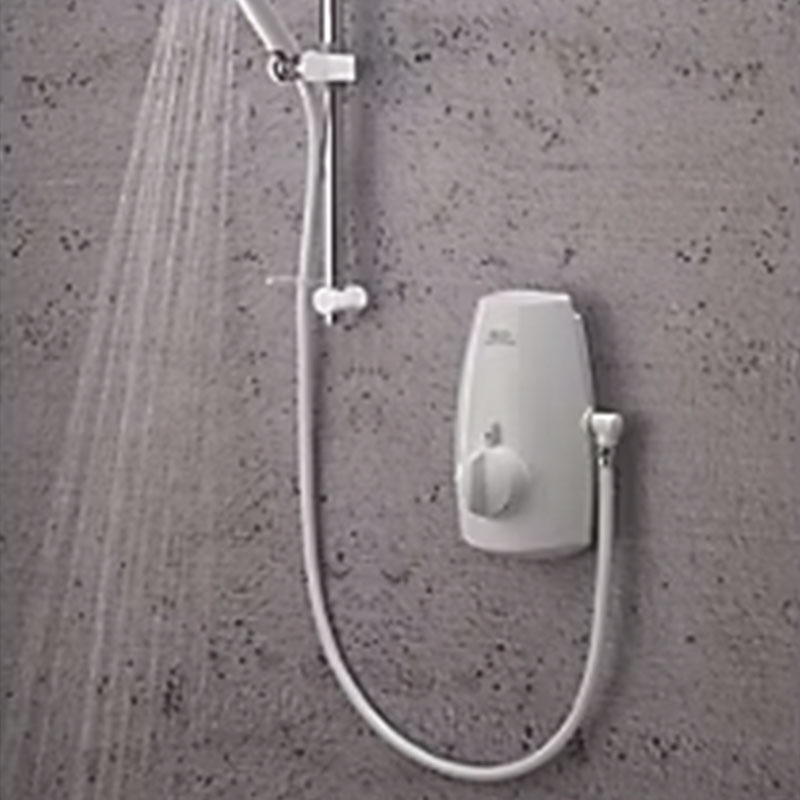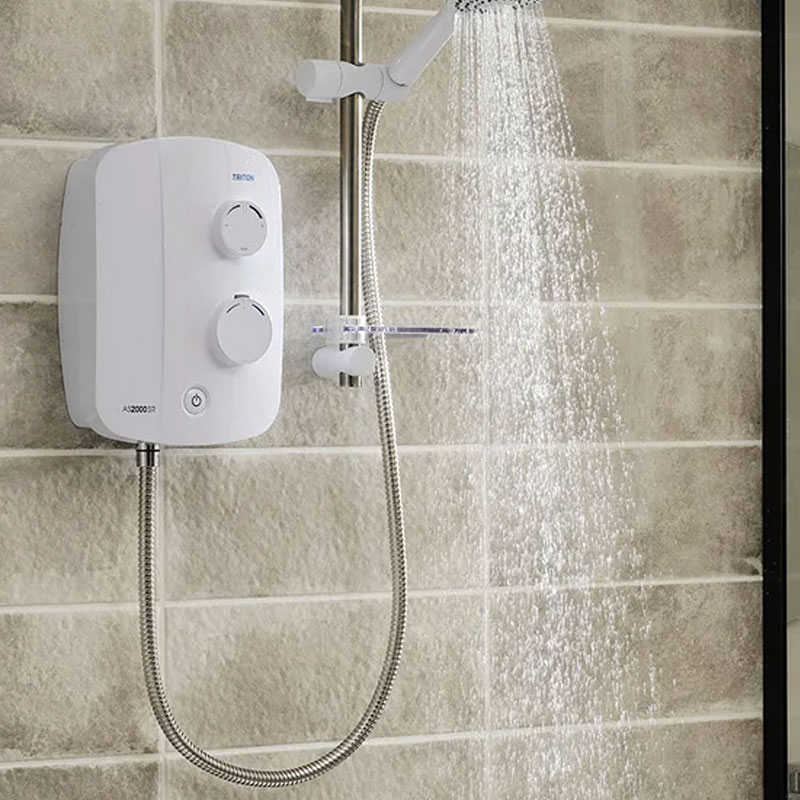What is a power shower? How they are different to other types of showers
If you're asking yourself, what is a power shower we are here to help. Here the experts explain exactly what they are and how they work
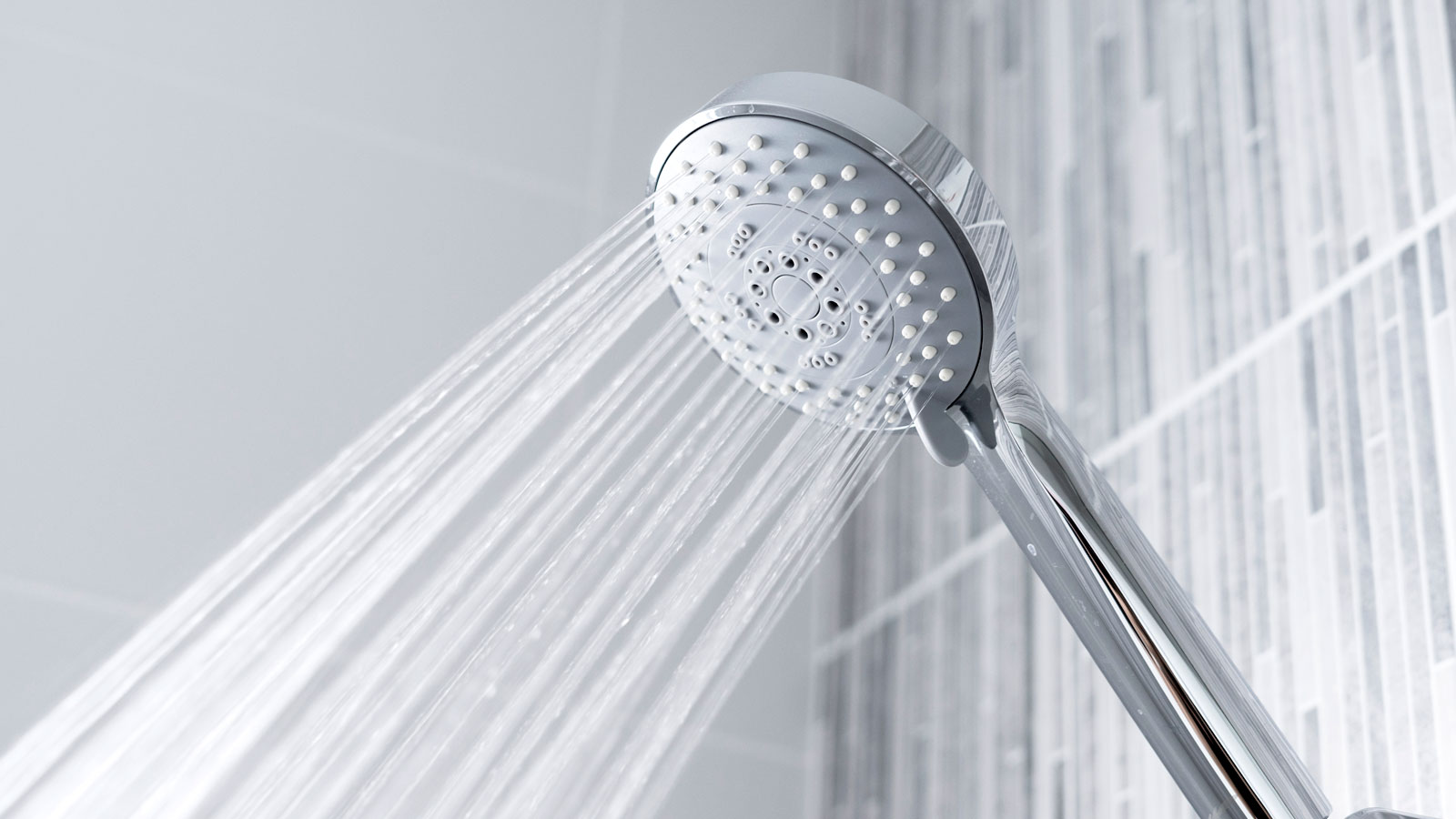
If you’re looking for a new shower for a bathroom upgrade, you’ll probably be wondering what is a power shower. How does it differ from other types of showers, and is it the shower I need? You'll also need to know if a power shower is compatible with your water system, some aren’t.
If your system is good to go, a power shower brings with some much needed oomph for homes with low water pressure. It will add a more powerful flow of water through the best shower heads as it boosts the flow rate. Making sure you get a steaming hot shower to enjoy rather than just a cold miserable dribble.
What is a power shower?
Just like mixer showers, power showers combine water from your hot and cold water supplies in order to achieve the right temperature. However, where they differ from standard mixer showers is that they feature a shower pump, designed to boost water pressure. This is a key distinction when it comes to how to choose a shower.
The shower pump will usually be sited within the shower unit, where it forces water through at a much higher pressure. (Although an alternative is to fit a shower pump – but a power shower provides an all-in-one unit.)
They are commonly specified by people who are after shower room ideas but who live in homes with a cold water tank in the loft that supplies water to a hot water tank, usually located in the airing cupboard.
Nigel Palmer, Head of Communications Marketing at Aqualisa explains what they are good for, "A power shower is an ideal solution if you are experiencing a weak shower due to low water pressure." He adds, "For example, the Aqualisa Aquastream mixes water from hot and cold water supplies to create the desired temperature and uses a powerful shower pump to boost water flow up to 18 litres per minute. That’s around five times more powerful than an electric shower."
So if you live with low water pressure palmer but still want performance, Palmer says, "A power shower is the best solution.”

Nigel Palmer has worked for brands in the UK bathroom and kitchen industry for nearly 20 years, and is now working on the launch of the next generation of Smart Showers with Aqualisa.
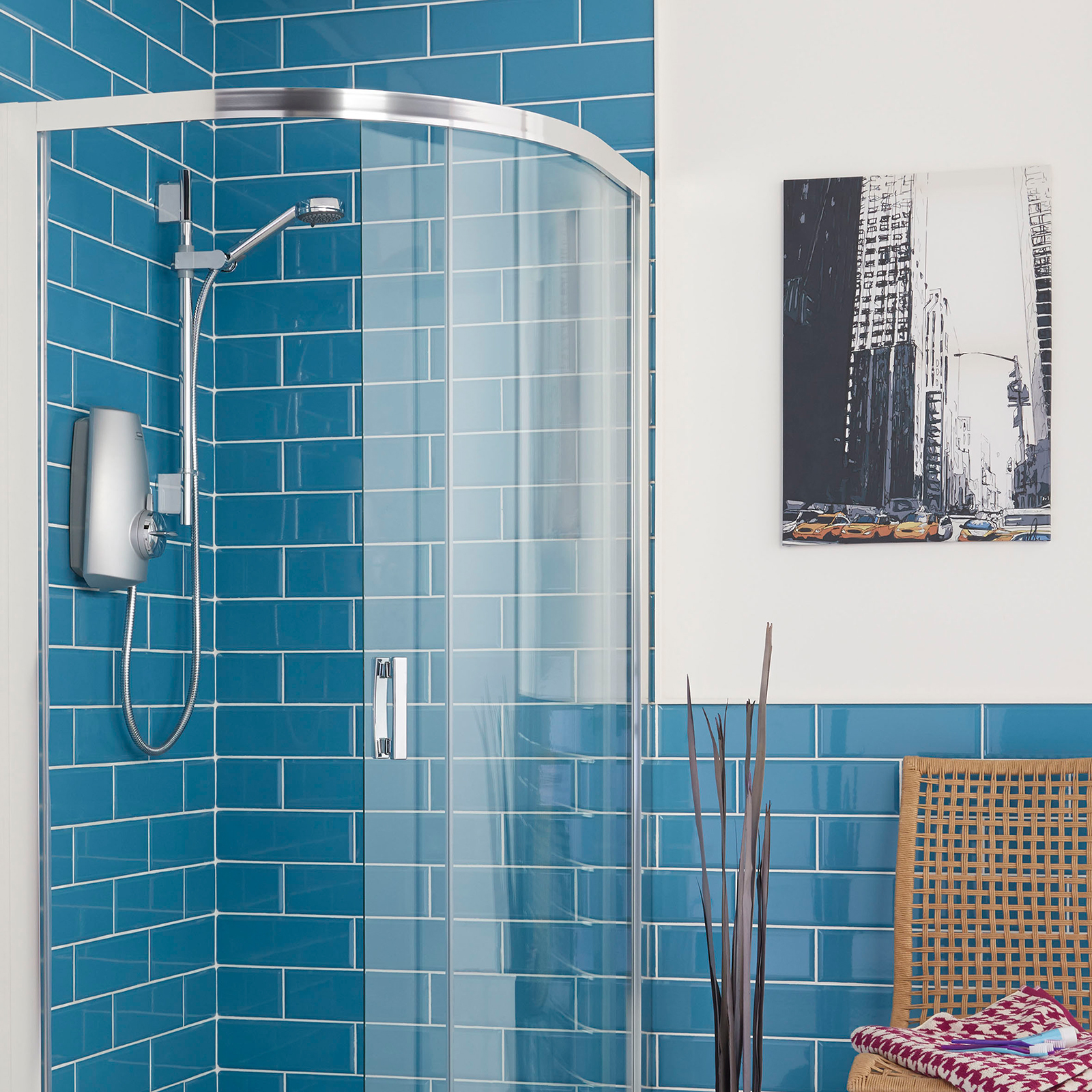
Try these power showers for your home
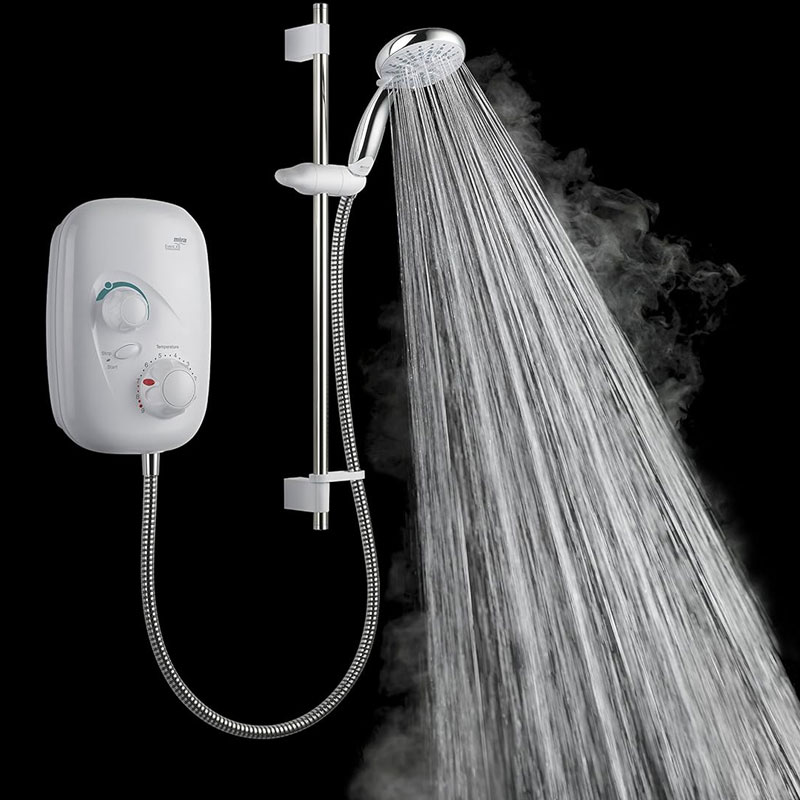
A compact power shower suited to low pressure systems. Separate temperature and flow help ensure you get what you want.
Can I have a power shower?
Before rushing out and buying a power shower, you will need to ascertain that your bathroom design and, more importantly, your plumbing system will be compatible with one.
"If you have a combination boiler (where water from the mains is heated by the boiler as it is required) or a pressurised system (where your hot water tank is fed directly from the mains, rather than a cold-water tank), then you won’t be able to install a power shower," says Hannah Thomsen, Product Manager of Electric and Power Showers at Mira Showers. "However, you can install a mixer or digital shower."

Thomas is the Technical Manager at NOSA with 18 years’ experience in the bathroom industry. An expert in product development, market trends, and customer insights, with a passion for travel and design inspiration.
Electric shower v power shower
It's a common misconception that electric showers and power showers are the same, but they’re not. They have similarities but serve different purposes.
Thomas Heaney, Technical Manager at NOSA explains the difference between the two, kicking off with electric showers, “An electric shower functions much like a kettle, heating cold water as it passes through the unit.” He continues, “This means it operates independently of a home’s boiler or hot water system, making it a great choice for properties with limited hot water storage or where energy efficiency is a priority.”
But there is a difference between electric showers as Heaney reveals, “The heating element restricts the flow rate.” He adds, “Budget electric showers typically provide a flow rate of around 7 litres per minute, while higher-end electric showers can achieve 10 to 12 litres per minute for improved performance.”
Next Heaney explains how power showers work, “A power shower, on the other hand, refers to a thermostatic or manual shower valve that uses pre-heated water from a home’s hot water system.” He adds, “This type of shower can provide a much stronger and more consistent flow – often around 18 litres per minute –which is ideal for those looking for a high-pressure experience.”
He adds a final note of caution, “A pump can only be added to a gravity-fed system (where water is stored in a tank).” But it's different if you have a combi boiler, “If you have a combi boiler, a pump cannot be used because combi boilers rely on mains water pressure. In this case, the flow rate depends on the boiler's output and mains pressure.”
FAQs
What types of power shower are there?
There are two types of power shower:
- Thermostatic power showers are designed to keep the pressure and temperature of the water coming from your shower steady, even when water is used elsewhere in the house.
- Manual power showers, on the other hand, rely on the user to tweak the controls until their desired temperature is reached and adjust it if necessary when water is used in another part of the house.
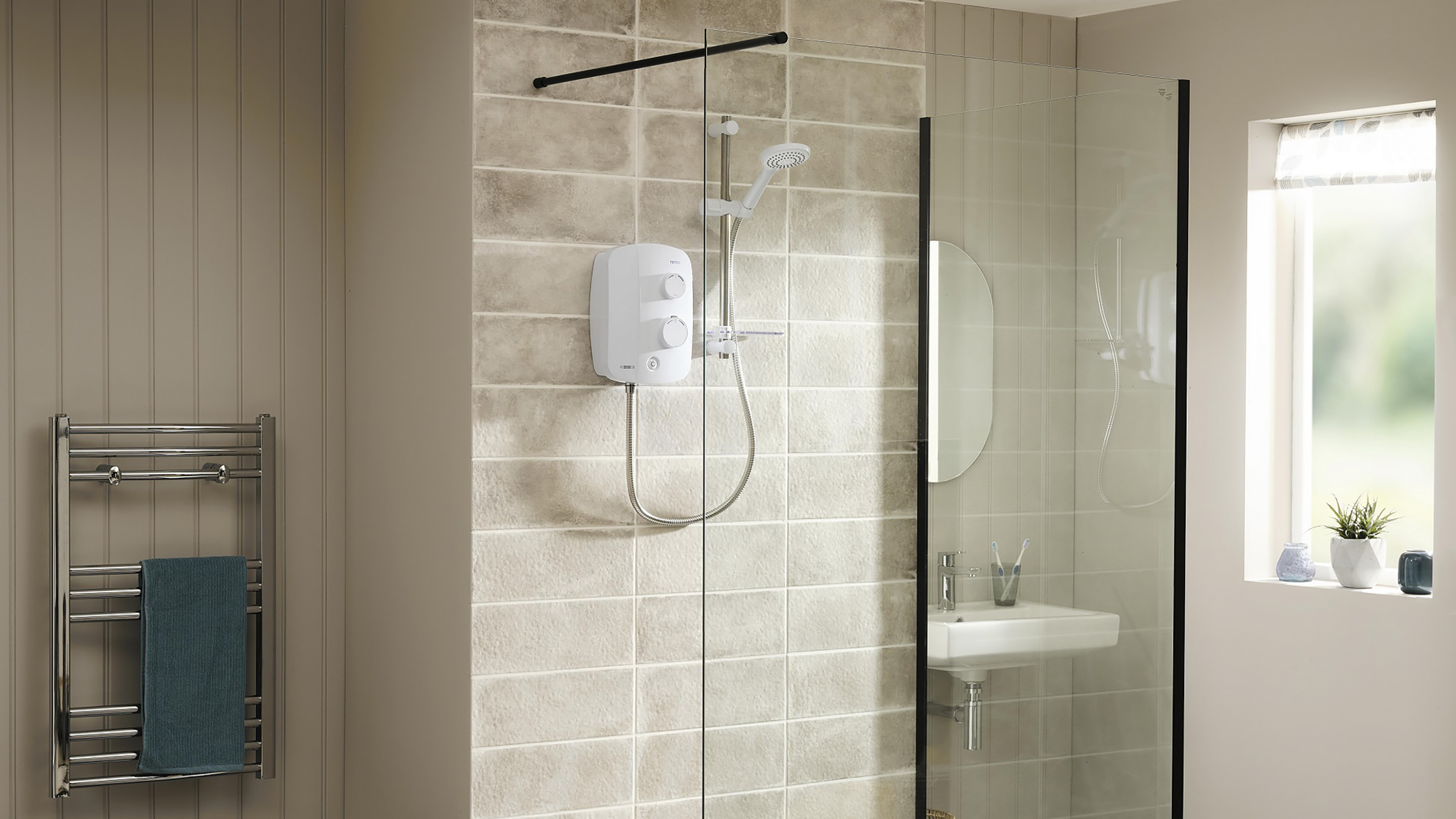
How much do power showers cost?
Manual power showers tend to be cheaper than thermostatic versions, starting at around £160. Thermostatic power showers, on the other hand, cost from approx. £250, rising upwards of £700.
In addition to the cost of the power shower unit you need to think about installation costs as well. As a general guideline you should expect to pay around £200-£350 depending on the complexity of the installation.
If you're thinking of getting rid of your bath and adding a power shower then check out our replacing a bathtub with a shower and shower over bath ideas guides. If you need a new shower head check out our best shower heads guide.
Get the Homebuilding & Renovating Newsletter
Bring your dream home to life with expert advice, how to guides and design inspiration. Sign up for our newsletter and get two free tickets to a Homebuilding & Renovating Show near you.
Natasha was Homebuilding & Renovating’s Associate Content Editor and was a member of the Homebuilding team for over two decades. In her role on Homebuilding & Renovating she imparted her knowledge on a wide range of renovation topics, from window condensation to renovating bathrooms, to removing walls and adding an extension. She continues to write for Homebuilding on these topics, and more. An experienced journalist and renovation expert, she also writes for a number of other homes titles, including Homes & Gardens and Ideal Homes. Over the years Natasha has renovated and carried out a side extension to a Victorian terrace. She is currently living in the rural Edwardian cottage she renovated and extended on a largely DIY basis, living on site for the duration of the project.
